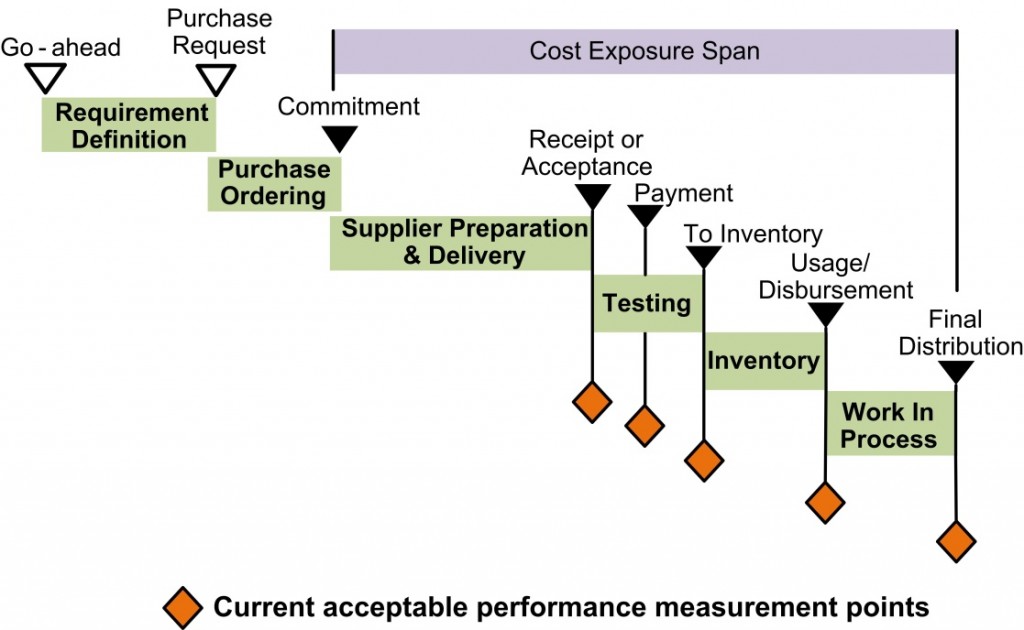Earning Value for Material
A common question that H&A Consultants are asked is “What is the most common point to claim earned value (the budgeted cost for work performed or BCWP) for material?”
The answer? There is not one point for earning value for material in all categories.
Guideline 21 in the EIA-748 Standard for Earned Value Management Systems (EVMS) says, “…earned value is measured and at the point in time most suitable for the category of material involved….”. Notice the highlight on “suitable for the category of material.”
Let’s look at the two most common high-level types of material categories for discussion: Engineering and Manufacturing. Engineering material earned value (EV) is typically claimed at receipt. Manufacturing material EV is typically claimed when issued from inventory. The most common acceptable points for claiming earned value for the various material categories are illustrated below.

With the advent of MRP/ERP systems and the tendency for companies not to want to keep large stores for materials, many have gone to a “just in time” approach where they order delivery of their materials to be staggered over time to arrive just in time for their need dates. Large production or manufacturing facilities will still need to have inventories to ensure their lines continue in operation.
What happens in some facilities, however, is that contractors have placed the emphasis on the next part of Guideline 21 that says “…but no earlier than the time of actual receipt of material” as their authority to earn value for all material at point of receipt. These contractors are asking for trouble with this misinterpretation. Contractors should base their plans and EV on the category of material involved.
Whenever contractors earn value at the point of receipt for material they plan to maintain in their inventory bins for several months, they open themselves to have DCMA write Discrepancy Reports (DRs) or Corrective Action Requests (CARs) for using inappropriate points in time to earn value for material.
- Rationale for this is – When you claim EV, you are telling the customer you are a certain percent complete with the program. For example, if materials represent 70 percent of your contract, earning value for all the material (or a large part of it) up front says (in the Contract Performance Report CPR to the customer) “I am 70% done with your program”. The customer tends to think in terms of “7 of my 10 airplanes are completed” when in fact none are completed.
- The result – A very unhappy customer because you indicated incorrectly (in the CPR) you are ahead of schedule. This false lead erodes away until you are late delivering the planes, helicopters, ships, tanks, or other contracted items to the customer.
- Bottom line – A number of contractors are incorrect in thinking they can earn value for all material at the point of receipt. The EIA-748 Guidelines – even back in the day when it was the Cost/Schedule Control Systems Criteria (C/SCSC) checklist – have always required the distinction by material category (there are always more than just the two categories discussed above). DoD and DCMA have always stated there is no one point for claiming material earned value.
Need help determining the appropriate earned value techniques to use for material? Humphreys & Associates can assist you with all your EVMS needs. Contact us today.

{ 2 trackbacks }